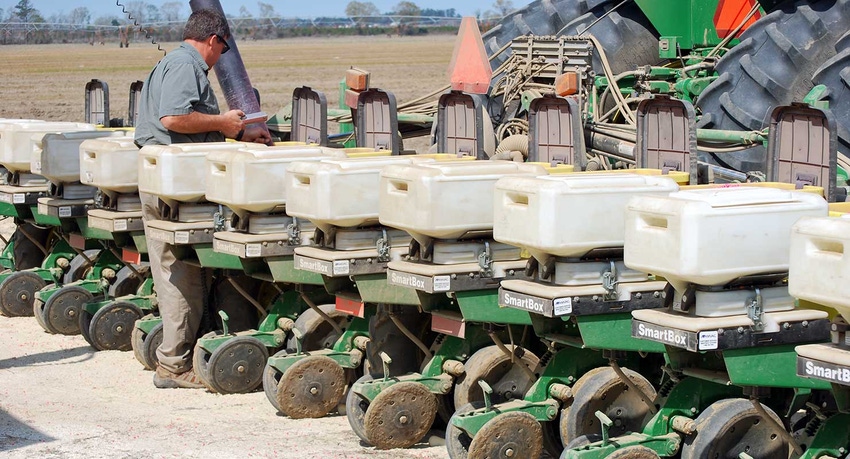
North Carolina State University Extension Economist Nick Piggott sees a profitable 2022 for corn, soybean, and wheat producers. However, he cautions there is some uncertainty about profitability with rising input costs of seed, fuel, and fertilizer that will impact returns,. The question remains “by how much?”
Driving strong prices are low-ending stocks of wheat, corn, and soybeans below five-year averages, reflecting strong demand that has been out-stripping supply in recent years. Piggott says the United States needs slightly more corn and soybean acres and significantly more wheat acres and trend yields to replenish stocks back to five-year average ending stocks.
Additionally, Piggott says demand may still need to be rationed some which points to higher prices that will also serve to entice additional planted acreage and offset rising input costs
“I am pretty bullish that prices will remain good into 2022, and they need to because of where we are with demand and supply and to avoid a cost-price squeeze for farmers (a period of where production costs are increasing and crop prices are flat or declining),” Piggott said in a Dec. 2 grain market and crop budget webinar.
In the webinar, Piggott projected the amount of corn, soybean, and wheat acres the United States will need in 2022 to replenish stocks back to five-year averages. He said the projections are his or “Piggott’s Projections,” not USDA forecasts.
In 2021, the United States planted 238 million combined acres of corn, soybeans, wheat, and cotton. Of that total, there were 93 million acres of corn, 87 million acres of soybeans, 47 million acres of wheat, and 11 million acres of cotton.
“We need to get this to around 240 million acres - with different combinations of increases. It’s interesting to see where we’ve come since 2019 on corn and soybeans. In 2020 we planted 8.1 million more acres of corn and soybeans combined, and in 2021, we did another 6.6 million acres combined,” Piggott said.
Piggott projects the United States will need another 0.9 million acres of corn and soybeans combined in 2022 to replenish stocks; 600,000 acres of corn and 300,000 acres of soybeans. This projection assumes trend yield in 2022 and maintains 2021 demands.
“Over the last three years, we’ve planted about 15.6 million more acres of corn and beans, which is significant. When you throw wheat into the mix, if you want to get wheat ending stocks back up to five-year average levels, we would have to plant an additional 11.9 million acres of wheat. Achieving ending-stocks back to five-year average levels for all three crops at current levels of demand, would mean an increase of 31 million acres from 2019 to 2022 levels.
“Increases of this magnitude raises concerns we might be getting to the stage where we will be bringing marginal acres back into production,” Piggott said.
Turning to North Carolina, Piggott said the state reached its most recent high in 2014 for combined corn-soybean-wheat-cotton acreage when farmers planted roughly 3.8 million acres of corn, soybeans, wheat, and cotton. Since then, the acreage devoted to those crops was down 515,000 acres in 2021.
“We have room in North Carolina to increase our row crop acreage, especially coming into 2022, where it looks like we will have a chance to make some good profits as long as input prices don’t derail all those profits,” Piggott said.
“Comparing 2021 to the record 2014, the only crop we are planting more of is corn, up 120,000 acres. We are down 150,000 acres of soybeans, down 380,000 acres of wheat, and down 105,000 acres of cotton, for a total 515,000 fewer acres,” he said.
“We have room to expand some acreage, as long as all of this land hasn’t gone to development and been taken out of agriculture. We have some room here to help increase the production nationally if we can plant some more acreage if it’s more profitable to do so. It is vitally important to maintain at least, or even increase feed grain acres, to do all we can to supply the large hog, broiler, and turkey business located in North Carolina,” Piggott added.
Piggott believes higher nitrogen prices will potentially switch North Carolina to more soybean acres, away from corn, while negatively impacting wheat acres and yields. He urges farmers to be on the lookout for USDA’s March 2022 prospective plantings report to guide pricing and planting decisions for 2022 as this could be a catalyst for market price rallies if prospective planted acreages are below expectations a repeated of 2021.
About the Author(s)
You May Also Like






